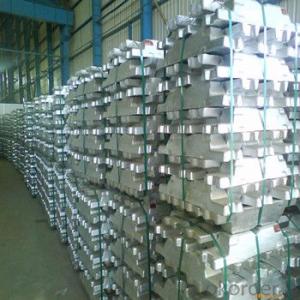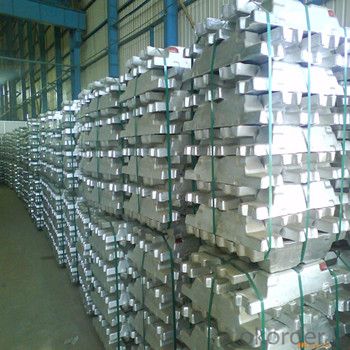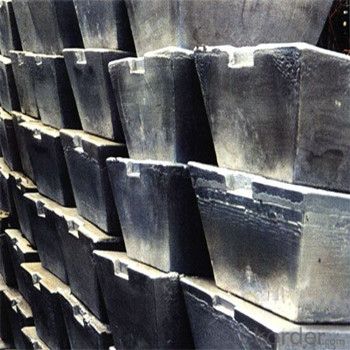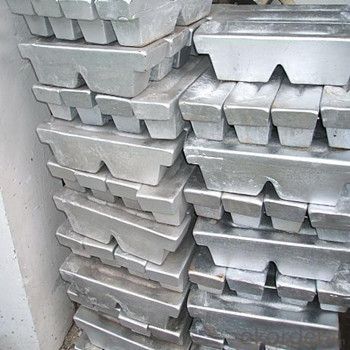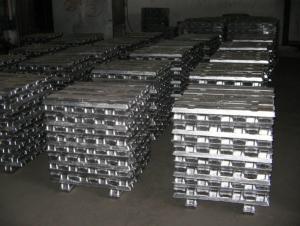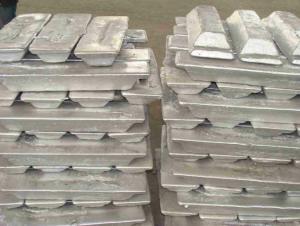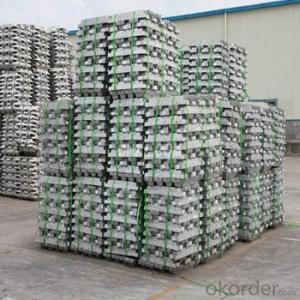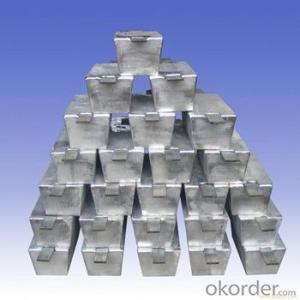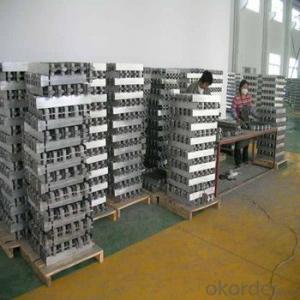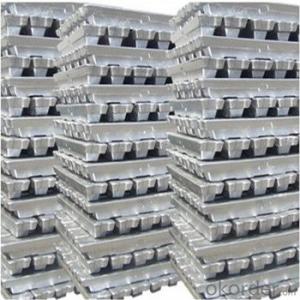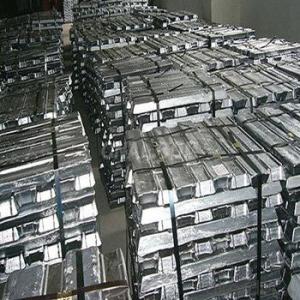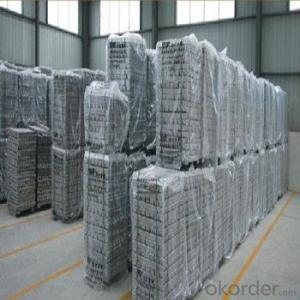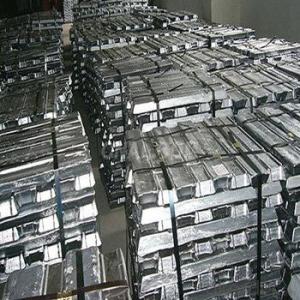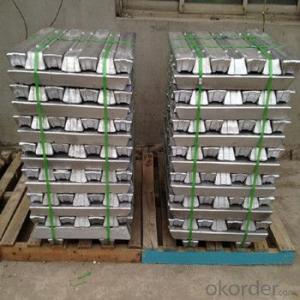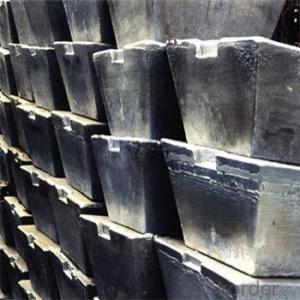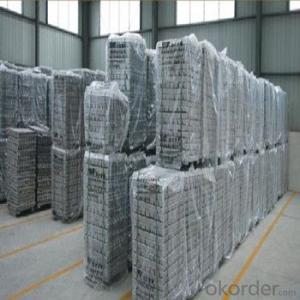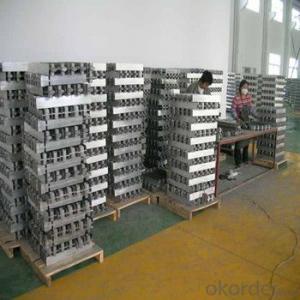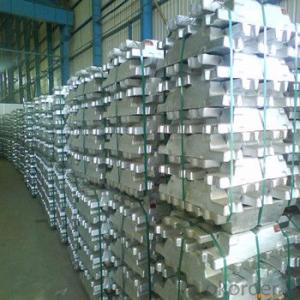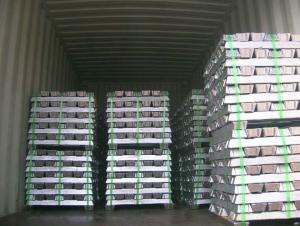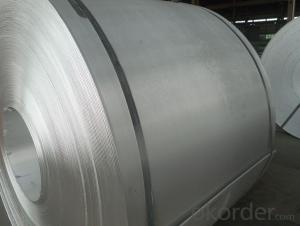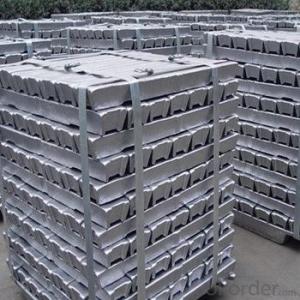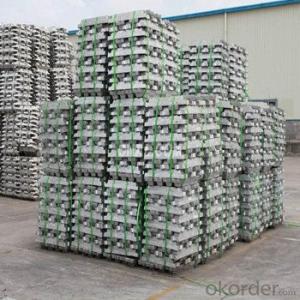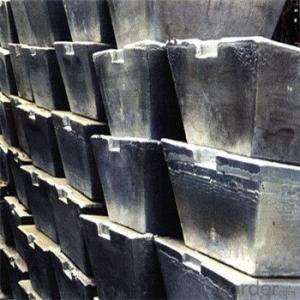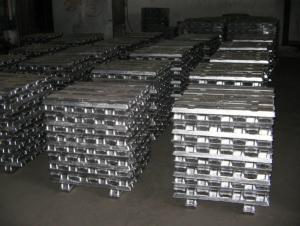Aluminium Ingot with Good Price and Hot Sale for the Markets
- Loading Port:
- China main port
- Payment Terms:
- TT or LC
- Min Order Qty:
- 1000 m.t.
- Supply Capability:
- 10000 m.t./month
OKorder Service Pledge
OKorder Financial Service
You Might Also Like
Pure Aluminum Ingot Used for Industry
1.Structure of Aluminum Ingot Description
Aluminum Ingot is with the AL as the main chemical composition. Aluminum Ingot is used for industry,such as automobile,pinning and weaving,electron broadly and so on. Aluminum Ingot has the following advantages: easy control and operation, fast melting.
2.Main Features of the Aluminum Ingot
•High Purity
•Easy control and operation
•High strength
•Fast melting
•Competitive price
•Best Service
3. Aluminum Ingot Images
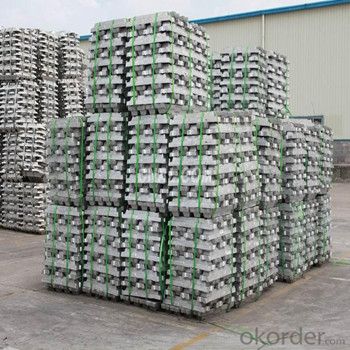
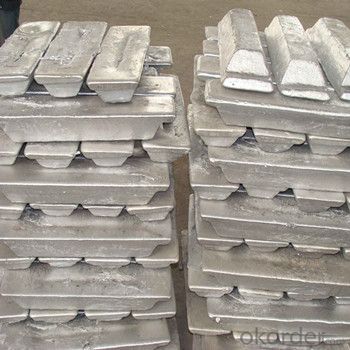
4. Aluminum Ingot Specification
Grade | Chemical Composition % | |||||||||
Al≥ | impurities ≤ | |||||||||
Si | Fe | Cu | Ga | Mg | Zn | Mn | others | Sum | ||
Al99.9 | 99.90 | 0.50 | 0.07 | 0.005 | 0.02 | 0.01 | 0.025 | - | 0.010 | 0.10 |
Al99.85 | 99.85 | 0.80 | 0.12 | 0.005 | 0.03 | 0.02 | 0.030 | - | 0.015 | 0.15 |
Al99.7 | 99.70 | 0.10 | 0.20 | 0.010 | 0.03 | 0.02 | 0.030 | - | 0.030 | 0.30 |
Al99.6 | 99.60 | 0.16 | 0.25 | 0.010 | 0.03 | 0.03 | 0.030 | - | 0.030 | 0.40 |
Al99.5 | 99.50 | 0.22 | 0.30 | 0.020 | 0.03 | 0.05 | 0.050 | - | 0.030 | 0.50 |
Al99.00 | 99.00 | 0.42 | 0.50 | 0.020 | 0.03 | 0.05 | 0.050 | - | 0.050 | 1.00 |
5.FAQ of Aluminum Ingot
We have organized several common questions for our clients,may help you sincerely:
①How about your company?
A world class manufacturer & supplier of castings forging in carbon steel and alloy steel,is one of the large-scale professional investment casting production bases in China,consisting of both casting foundry forging and machining factory. Annually more than 8000 tons Precision casting and forging parts are exported to markets in Europe,America and Japan. OEM casting and forging service available according to customer’s requirements.
②How to guarantee the quality of the products?
We have established the international advanced quality management system,every link from raw material to final product we have strict quality test;We resolutely put an end to unqualified products flowing into the market. At the same time, we will provide necessary follow-up service assurance.
③How long can we receive the product after purchase?
In the purchase of product within three working days, We will arrange the factory delivery as soon as possible. The pecific time of receiving is related to the state and position of customers.Commonly 7 to 10 working days can be served.
- Q: What are the different surface treatment options for aluminum ingots?
- Depending on the desired outcome and application, there are several surface treatment options available for aluminum ingots. Commonly used options include anodizing, powder coating, polishing, and painting. Anodizing is a favored method for treating aluminum ingots. It involves an electrochemical process that creates a protective oxide layer on the surface of the aluminum. Anodizing offers benefits like increased corrosion resistance, improved durability, and enhanced aesthetic appearance. It also allows for coloring options through dyeing the oxide layer. Another option is powder coating, which entails applying a dry powder coating to the aluminum surface and curing it in an oven. The powder adheres electrostatically and forms a durable and protective layer. Powder coating provides excellent resistance to impacts, chemicals, and weather conditions. It comes in a wide range of colors and finishes. Polishing is a method that involves smoothing and shining the surface of aluminum ingots. It uses abrasive materials and techniques to remove imperfections, scratches, or dullness. Polishing enhances the aesthetic appearance, giving the aluminum a mirror-like or satin finish. Painting is a treatment option where a liquid paint coating is applied to the aluminum surface. It serves both protective and decorative purposes. Painting offers a wide range of colors and finishes, allowing for design flexibility and customization. It is commonly used in architecture, outdoor furniture, and automotive parts. In addition to these options, aluminum ingots can undergo brushing, sandblasting, and etching for unique finishes and textures based on specific requirements. Overall, the choice of surface treatment for aluminum ingots depends on factors such as desired appearance, functionality, and the environment of use. Each treatment option has its advantages and considerations, so careful evaluation of requirements is necessary before selecting the most suitable method.
- Q: How much capital do I need to invest in the recycled aluminium ingot?
- This mainly depends on how much money you scale, there are local to not to do this, I am here in Foshan now, we're not here to make this move to distant places to engage in equipment, don't need how much, I have many friends in this, but now we're not here to do
- Q: Our unit is aluminum smelting enterprise, mainly producing aluminum ingots. The unit adopts wet dedusting equipment, and the packing tower explodes!
- Aluminum chemical nature is lively, is a kind of metal dust explosion, explosion limit concentration of 30g/m3 1.24Mpa, the maximum explosion pressure, the maximum pressure rise rate of 41.5Mpa/s, the explosion index 41.5Mpa.m/s, risk rating St1.
- Q: What are the environmental impacts of producing aluminum ingots?
- The production of aluminum ingots has various environmental impacts. One of the main concerns is the extraction of bauxite, the primary ore used to produce aluminum. Mining for bauxite often involves deforestation and habitat destruction, leading to the loss of biodiversity and disruptions to ecosystems. The process of refining bauxite into alumina, a precursor to aluminum, requires significant amounts of energy. This energy is typically generated from non-renewable sources such as coal or natural gas, resulting in greenhouse gas emissions and contributing to climate change. Electrolysis is then used to convert alumina into aluminum metal, which requires large amounts of electricity. If this electricity is generated from fossil fuel-based power plants, it further contributes to greenhouse gas emissions. However, some aluminum smelters are transitioning to renewable energy sources, which can help reduce their carbon footprint. The production of aluminum ingots also generates waste and by-products. The red mud, a residue left after extracting alumina, is highly alkaline and can pose risks to soil and water quality if not properly managed. It can also have harmful effects on aquatic life if it enters nearby water bodies. Additionally, the transportation of bauxite, alumina, and aluminum ingots over long distances contributes to carbon emissions and air pollution. The extraction and production processes may also require the use of chemicals and other resources that can have negative impacts on local ecosystems and water sources if not properly managed. In conclusion, the production of aluminum ingots has several environmental impacts, including deforestation, greenhouse gas emissions, waste generation, and potential pollution of water and soil. However, the industry is making efforts to mitigate these impacts through renewable energy adoption, improved waste management practices, and resource efficiency measures.
- Q: What elements do alloy die casting ingots require?
- Zinc can improve fluidity, increase brittleness and reduce corrosion resistance in aluminum alloy. Therefore, zinc content should be controlled in the specified range. As for the ZL401 alloy with high zinc content, it has better casting performance and mechanical properties, and the cutting process is better.
- Q: How is aluminum ingot produced?
- Aluminum ingot is produced through a process known as smelting. The first step in this process involves the extraction of bauxite, which is a mineral rich in aluminum oxide. Bauxite is mined from open-pit mines and then refined to remove impurities. Once the refined bauxite is obtained, it is then converted into alumina through a chemical process called the Bayer process. In this process, the bauxite is dissolved in a solution and heated under pressure, resulting in the formation of alumina. The alumina is then transported to smelting facilities where it is further processed to produce aluminum ingots. The smelting process involves the use of electrolysis, where the alumina is dissolved in a molten cryolite bath and subjected to an electric current. This causes the aluminum ions to be attracted to the cathode, where they collect and solidify into ingots. After solidification, the ingots are removed from the electrolytic cell and further processed to meet specific requirements. They are typically cast into large blocks or rectangular shapes to facilitate storage and transportation. Overall, the production of aluminum ingots involves a series of complex processes starting from the extraction of bauxite to the smelting and casting of aluminum. These ingots then serve as the raw material for various industries that utilize aluminum in the production of a wide range of products.
- Q: What are the global production trends for aluminum ingots?
- Over the years, there has been a steady increase in global aluminum ingot production, driven by the high demand for this versatile metal in various industries such as aerospace, automotive, construction, and packaging. China, particularly the Asia-Pacific region, has emerged as the dominant player in aluminum ingot production. China's rapid industrialization and infrastructure development have played a significant role in its rise to the top. The country's ample reserves of bauxite and low production costs have attracted many global manufacturers to establish their operations there. North America and Europe also play a crucial role in aluminum ingot production, boasting well-established manufacturing bases and being home to several major aluminum producers. However, they face tough competition from China, which benefits from lower production costs. Moreover, the aluminum industry has been increasingly focused on sustainability and environmental consciousness. This has resulted in the adoption of energy-efficient technologies and the utilization of recycled aluminum scrap in the production process. Recycling aluminum not only reduces energy consumption but also decreases greenhouse gas emissions, making it a more sustainable option. Consequently, the global production of recycled aluminum ingots has been steadily rising and contributing to the overall production trends. In summary, the global production of aluminum ingots has been consistently increasing, with China leading the way as the largest producer. Despite their significant contributions, North America and Europe face fierce competition from China. Additionally, the industry is placing a greater emphasis on sustainability through recycling practices.
- Q: How can aluminum cans be made into aluminium ingots?
- High temperature; persistent high temperature
- Q: How much is a ton of aluminum now?
- According to the surface treatment of different ways, the price difference is much, generally speaking, is the price of aluminum ingot, plus every processing fee, aluminum ingot price is now 13000, plus processing fees in 3500 to 12000 yuan.
- Q: What are the advantages of using aluminum ingots in the production of automotive lightweighting solutions?
- There are several advantages of using aluminum ingots in the production of automotive lightweighting solutions. Firstly, aluminum is a lightweight material, which helps in reducing the overall weight of the vehicle. This leads to improved fuel efficiency and reduced emissions. Additionally, aluminum has excellent strength and durability properties, making it suitable for automotive applications. It can withstand harsh operating conditions and provide a high level of safety. Moreover, aluminum is highly corrosion-resistant, prolonging the lifespan of the vehicle. Lastly, aluminum is a recyclable material, making it environmentally friendly and contributing to sustainable manufacturing processes. Overall, the use of aluminum ingots in automotive lightweighting solutions offers various benefits in terms of performance, efficiency, safety, and sustainability.
Send your message to us
Aluminium Ingot with Good Price and Hot Sale for the Markets
- Loading Port:
- China main port
- Payment Terms:
- TT or LC
- Min Order Qty:
- 1000 m.t.
- Supply Capability:
- 10000 m.t./month
OKorder Service Pledge
OKorder Financial Service
Similar products
Hot products
Hot Searches
